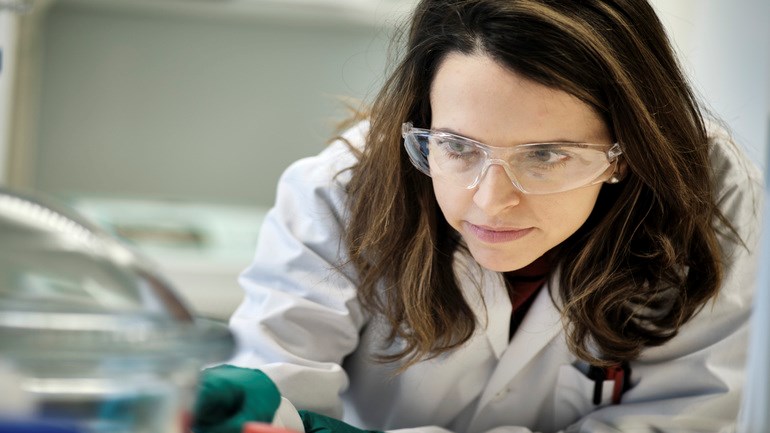In search of the optimal migraine medicine

Sabrina Valetti and her colleagues are researching methods to speed up the relief of migraine medications.
In order for migraine medication to be effective, it is vital that the active substance is released into the bloodstream immediately. The pills currently on the market today pass through the body's metabolism which means the effectiveness is lessened and there is a delay to the relief.
A research team at Malmö University believes they can get around this by means of a shortcut in the mucous membrane in the mouth.
We know from patient studies that it is important for the substance to reach maximum concentration in the blood within two hours in order to have an effect.
Sabrina Valetti
The active substances in migraine medicine are known as triptans. This is a collective name for tryptamine-based drugs that react with serotonin receptors and thereby inhibit certain signalling substances in the brain that can prompt the experience of pain. Serotonin is one of the most important signalling substances in the human nervous system and affects, among other things, sexual behaviour, appetite, sleep and pain.
In the research project Oral transmucosal delivery of eletriptan for neurological diseases, Sabrina Valetti and her research colleagues have chosen to work with eletriptan hydrobromide (EB), which is the triptan that has the least toxic effect on the heart.
“A regular triptan pill must pass through both the stomach and the liver, where a large part of the metabolism takes place. Studies show that more than half of the triptan dose is broken down on the way before it reaches the blood. We have investigated the possibility of getting EB directly into the blood vessels of the mouth through the mucosa under the tongue,” explains Valetti, who leads the project at the Biofilms Research Center for Biointerfaces.
Since the human mucosa is very similar to that of a pig, they used a porcine esophagus.
“We know from patient studies that it is important for the substance to reach maximum concentration in the blood within two hours in order to have an effect. So we investigated what the expected concentration of EB was with our method after this time. We saw that the expected concentration was higher in the 3D human cells than those provided by regular migraine pills. This was also the case for the pig mucosa, but only if the pH value was raised,” she says, and continues:
“Our body has a buffer system that regulates and balances temporary pH variations and we saw no toxic effect on the mucosa during a four-hour period when the pH value was increased from 6.8 to 10.4. But what we don't know is whether this is experienced as unpleasant in the mouth or not.”
The biggest challenge lies in the fact that the mucous membrane is a relatively thick tissue and a barrier that should protect us from a variety of external attacks. Last autumn, they therefore carried out tests where they examined in detail the lipids, which are believed to play a decisive role in pig mucous membrane in order to gain a better understanding of this particular barrier effect. The results are expected in the spring.
Text: Magnus Erlandsson & Adrian Grist